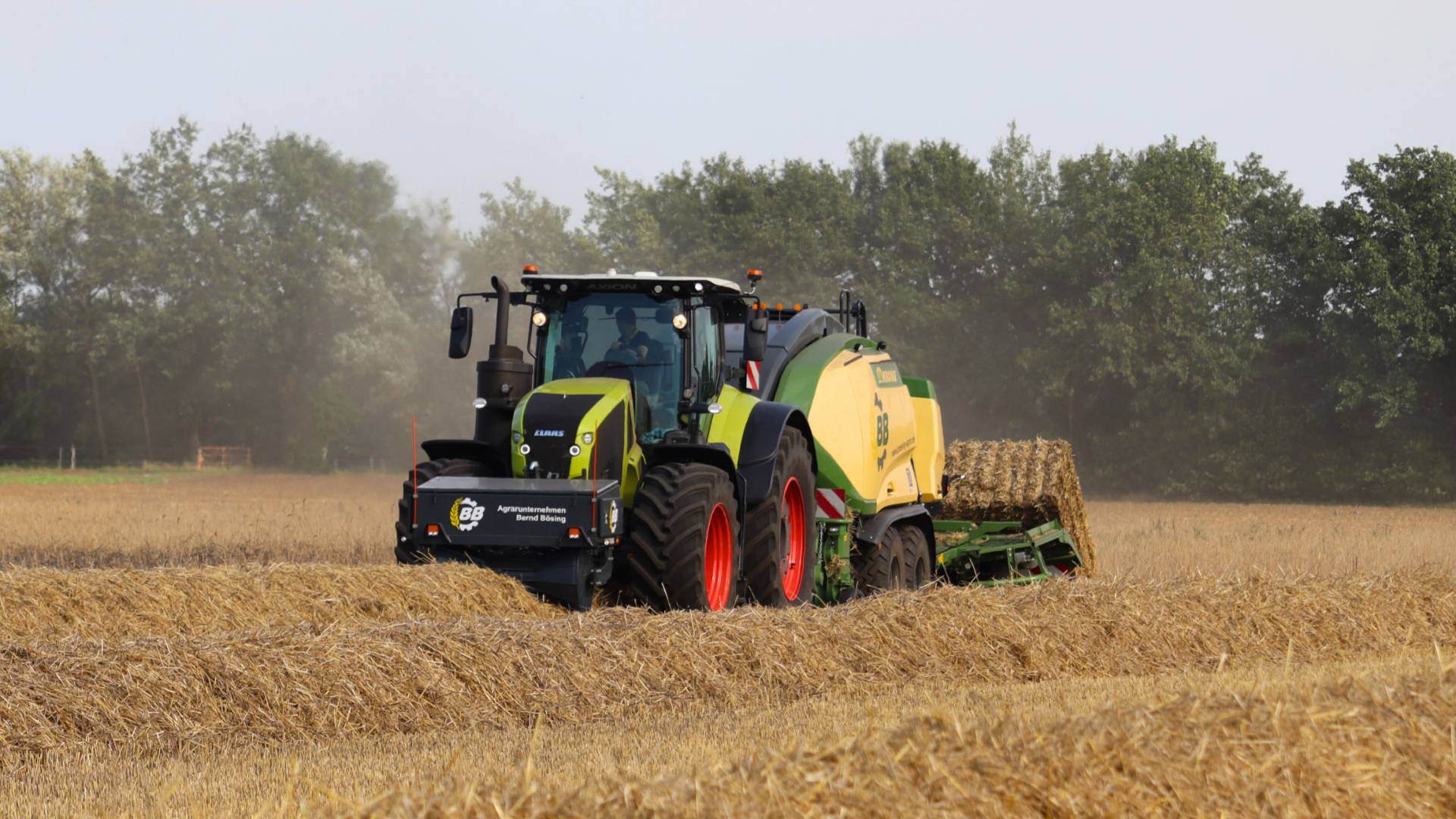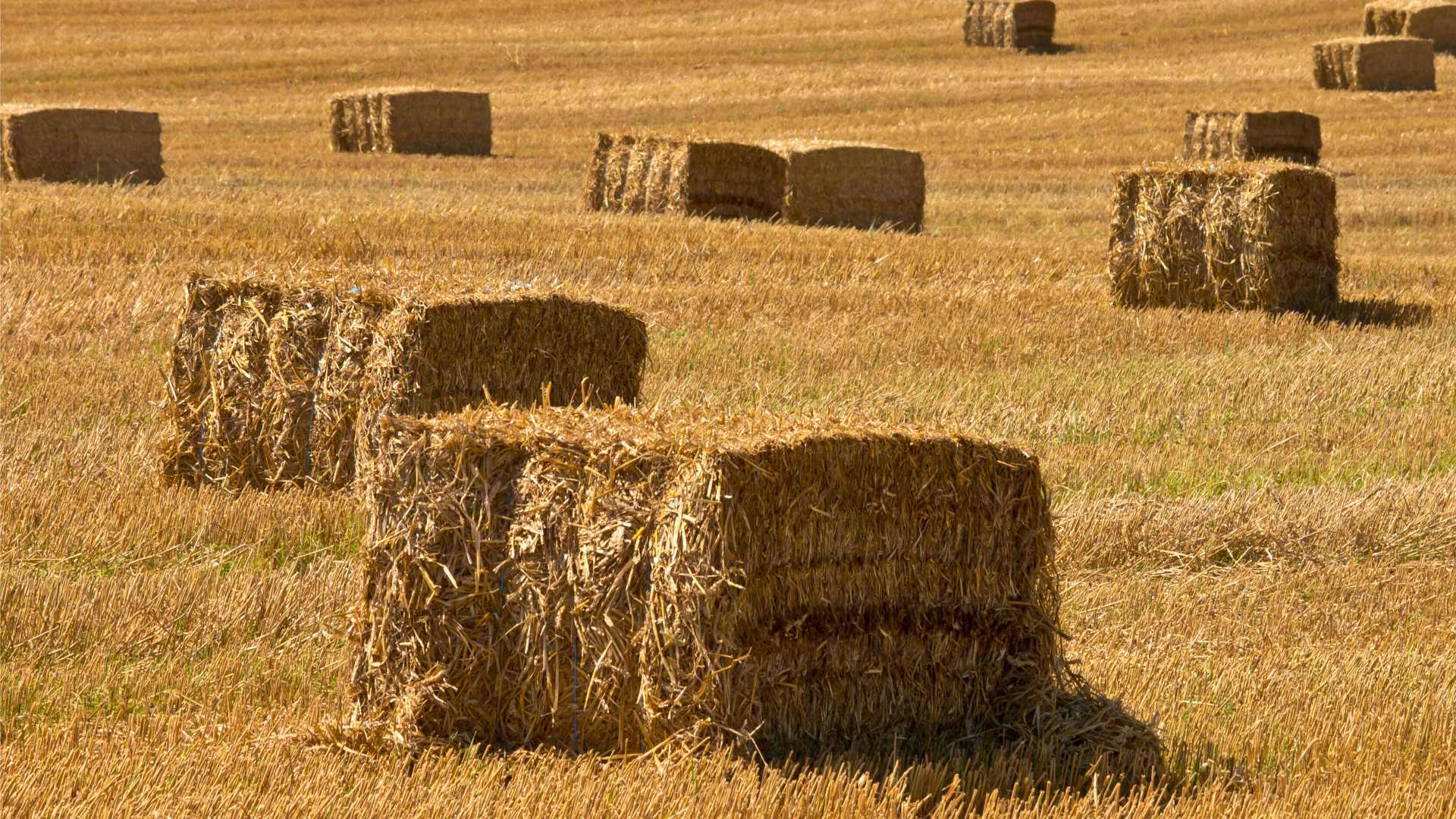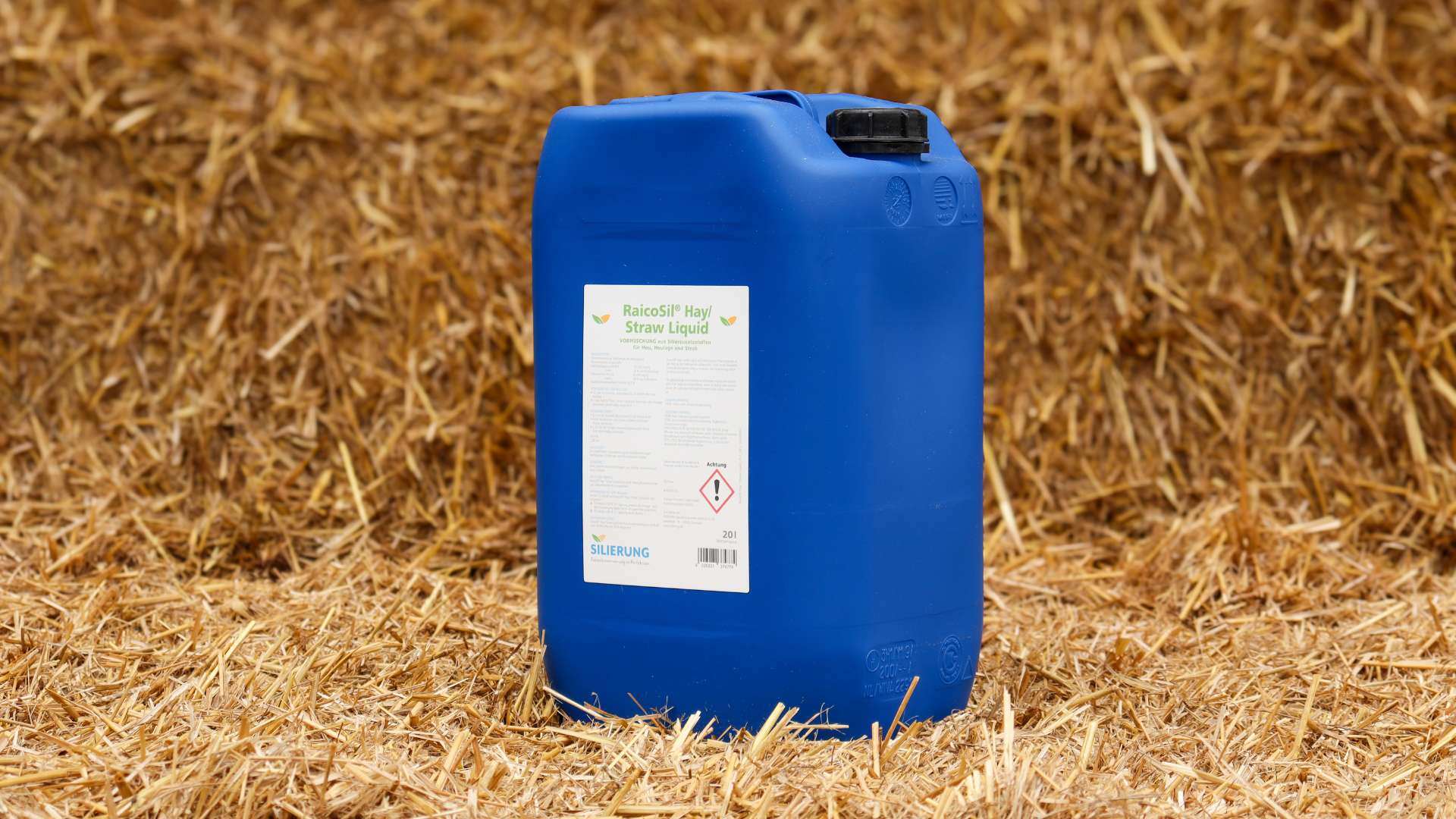The solution: Mobile decanter centrifuge in use
Why a decanter centrifuge?
The mobile decanter centrifuge from the agricultural company Bösing solves the problem on several levels: It achieves significantly higher separation efficiencies, especially for phosphorus, and also separates the finest suspended solids and sand components. It is the ideal technology for pig manure and fermentation residues with a high nutrient density. The service solution eliminates high investment costs for the farm.
 The mobile decanter centrifuge separates digestate into a solid and a liquid phase. Up to 80 % of the total phosphorus and the majority of the dry matter remain in the solid fraction, which is easily transportable and marketable with 25-35 % dry matter. The liquid phase, on the other hand, contains hardly any phosphorus, but the majority of the ammonium-containing nitrogen and is rich in potassium. It can therefore be easily spread on the farm's own land within the framework of the Fertilizer Ordinance, while the phosphorus-rich solid fraction can be marketed specifically in arable farming regions. By specifically adjusting the nutrient ratio (N:P), the farmer can make better use of the upper nitrogen limit and apply significantly more cubic meters per hectare - this saves on mineral fertilizers and increases efficiency.
The mobile decanter centrifuge separates digestate into a solid and a liquid phase. Up to 80 % of the total phosphorus and the majority of the dry matter remain in the solid fraction, which is easily transportable and marketable with 25-35 % dry matter. The liquid phase, on the other hand, contains hardly any phosphorus, but the majority of the ammonium-containing nitrogen and is rich in potassium. It can therefore be easily spread on the farm's own land within the framework of the Fertilizer Ordinance, while the phosphorus-rich solid fraction can be marketed specifically in arable farming regions. By specifically adjusting the nutrient ratio (N:P), the farmer can make better use of the upper nitrogen limit and apply significantly more cubic meters per hectare - this saves on mineral fertilizers and increases efficiency.
The system at a glance
The decanter centrifuge is installed on a mobile trailer and can be used completely independently. The equipment includes
- its own power generator
- a fully automatic control unit (control room)
- Pump technology for suction and filtrate discharge
- Hoses, couplings, hose bridges
- a swiveling discharge screw for the solids
- Rinsing and cleaning technology
Thanks to the accompanying pump trolley, the raw slurry can be conveyed up to 80 meters to the centrifuge. Depending on the conditions, it only takes around 30 minutes to set up on site. Hygiene is also taken into account: The entire system is cleaned and disinfected after each use.
Technical functionality in detail
The centrifuge
At the heart of the system is a high-performance centrifuge with a drum that rotates at up to 3600 rpm. An internal screw continuously transports the solids away. Separation takes place purely physically by centrifugal force, based on the different densities of the components - a clear advantage over the "squeezing out" of screw separators.
The process chain
The raw substrate is sucked in via a cutting filter and a rotary lobe pump, passes through a flow meter and enters the centrifuge. The filtrate passes through a special slalom system to minimize foaming before being pumped into the final storage facility via fire hoses. The solids are deposited at the rear of the system by means of a swiveling screw.
Control and monitoring
The entire system can be operated via remote maintenance. The company's technicians adjust parameters such as speed or flow rate as required. With homogeneous slurry, the system runs for several days at a time. The farmer simply checks the surroundings and pushes the solid matter aside if necessary.
Typical application scenarios
Agricultural applications
The decanter centrifuge is particularly suitable for pig manure, fermentation substrates and also cattle manure. The low-viscosity phase can be applied to cereals and grassland in spring and summer, while the solids are exported or used as humus fertilizer.
Special cases on biogas plants
If the agitators fail or the dry matter content is too high, the centrifuge allows for a recirculation separation directly in the tank. Sand deposits at the bottom of elevated tanks can also be separated in a targeted manner - without interrupting ongoing operation.
Industrial and municipal applications
In combination with a mobile polymer plant, sewage sludge, industrial sludge or pond sludge can also be dewatered. Flocculants are used to optimize the separation performance.
Mobile bridging of stationary systems
Many wastewater treatment plants or industrial plants use the mobile centrifuge temporarily to bridge maintenance or overhauls of their stationary systems - often for several weeks or months.
Advantages of separation
General advantages of separation
- Improved nutrient management through targeted separation into filtrate and solids
- Better utilization of nutrient limits: Save on mineral fertilizer
- Smaller storage volume and easier handling
- Reduced emissions and odor development
- Nutrients available to plants more quickly
- Lower application costs due to improved pumpability
Decanter centrifuge vs. press screw separator
- Separation efficiency: Nitrogen 20-40 %, phosphorus 60-90 %
- Efficiency: Up to twice the dry matter separation
- Separation of suspended solids and sand through centrifugal separation
- Higher nutrient density in the solids
- Better nutrient export with lower volume
Conclusion: Efficiency, flexibility and economy
The mobile decanter centrifuge offers agricultural businesses an economically and ecologically sensible solution for slurry/digestate separation and sludge dewatering. It closes the gap between technical performance and economic efficiency. Particularly in nutrient surplus regions, it enables nutrients to be targeted to where they are needed - without unnecessary ballast. Whether in pig farming, on biogas plants or in industry/municipalities: anyone who wants to separate efficiently can hardly avoid this technology.
FAQ - Frequently asked questions about the mobile decanter centrifuge
What requirements does the customer need to meet to use a decanter centrifuge?
The company should be able to provide at least 500 m³ of raw substrate. All that is required is a standard slurry connection and a storage tank for the filtrate. Everything else - including hoses, hose bridges, pumps and power supply - is provided by the Bösing team.
Where is the Bösing decanter centrifuge used?
The technology is used in agriculture (especially for pig and cattle manure), in biogas plants, in sewage treatment plants and for industrial and municipal sludge.
Within what radius does Bösing separate?
The main area of application is in Germany and the neighboring Netherlands. International assignments are also possible on request.
What does Bösing do in terms of hygiene on my farm?
After each job, all parts of the plant are thoroughly cleaned and disinfected. We leave the site as we found it.
How long does a typical job take?
That depends on the volume - with homogeneous liquid manure, up to 1,000 m³ can be processed per day, almost continuously in automatic mode.
What happens to the separated solids?
The solids contain high amounts of phosphorus and organic matter. They are therefore ideal for export to arable farming regions or as humus fertilizer.





